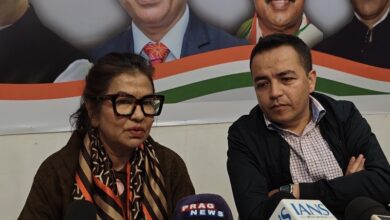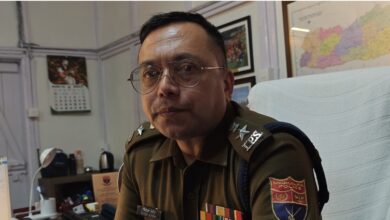Sufferings straddle Assam-Meghalaya border
The Lapangap-Tahpat incident shows how villagers suffer on both sides as border demarcation process is delayed
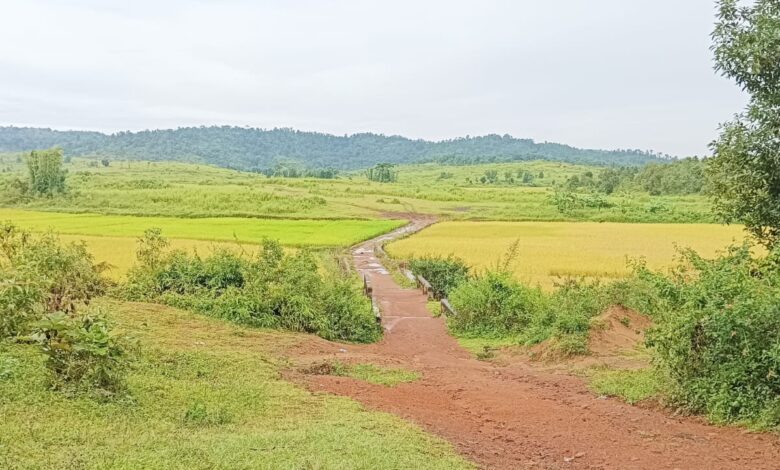
 Lapangap in West Jaintia Hills is one of the disputed areas along the Meghalaya-Assam border. It shares its border with Tahpat village in Assam’s West Karbi Anglong district. While the area is disputed, it was never disturbed until 2019 when there was an attempt at “forceful construction of roads”.
Lapangap in West Jaintia Hills is one of the disputed areas along the Meghalaya-Assam border. It shares its border with Tahpat village in Assam’s West Karbi Anglong district. While the area is disputed, it was never disturbed until 2019 when there was an attempt at “forceful construction of roads”.
This correspondent visited the village, which is over 100 km from Shillong city, on October 11, two days after a Karbi villager died in border clashes.
On the way to Lapangap, one could see expanses of paddy fields. Lapangap — which is under the Nartiang constituency, Deputy Chief Minister Sniawbhalang Dhar’s turf — is a quiet village, probably quieter after the violence. But it was difficult to tell the difference. The rain has washed away some of the gloom, and the greenery around looked deeper and darker than usual. A muddy track leads to the paddy fields where the October 9 clashes took place. On the other end of the fields, one can see the silhouettes of the Assam police’s camps.
The headman, Deimonmi Lyngdoh, informed that there was a curfew in place and villagers were not going to the fields to complete harvesting the paddy crops. He refused to go further down towards the fields.
A blue slipper lying near the field was the only incongruity in the setting, and could make one wonder what had happened here. There was barely any trace of violence. And then, a group of patrolling police personnel holding riot shields turns out to be a big telltale.
The beginning of violence
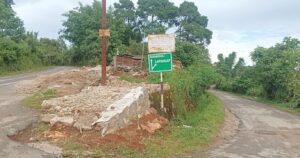 “I grew up in the village, and we never witnessed any violence here despite this place being a disputed border area. Everything started in 2019,” Lyngdoh said.
“I grew up in the village, and we never witnessed any violence here despite this place being a disputed border area. Everything started in 2019,” Lyngdoh said.
The Karbi villagers allegedly started construction of a black-topped road that cut through the land belonging to the Lapangap villagers. Lyngdoh said Assam police accompanied the villagers from Tahpat.
“We started a protest. But they would continue working at night. During our protests, the Assam police arrested some of our villagers from Khanduli market without giving any reason,” recollected Lyngdoh.
Then, in 2023, the Lapangap villagers got a central scheme through the Meghalaya Basin Development Authority. Under the scheme, they started planting saplings of champa, akasia, among others, at Lum Pynthor Lapangap. However, villagers from Tahpat alleged that it was their land and hindered the plantation project.
“Things turned ugly and representatives from both states had to call a meeting. The officials met at the SSA school in our village. It was decided that status quo would be reinstated along the peripheral areas and no government scheme would be implemented,” said Samkhi Situng, the assistant headman.
The village has over 300 households, which depend on agriculture as their primary livelihood. Besides paddy, other crops such as Lakadong turmeric, ginger, maize and vegetables are also grown. The turmeric and the ginger are the cash crops and are preferably grown inside the village and not on the periphery.
Lyngdoh said the villagers have land pattas from the Jaintia Hills Autonomous District Council for the land.
“Again in 2024, the Karbis started levelling a part of the hills, which belong to us, with the help of a JCB. They had the support of the Karbi Anglong Autonomous District Council,” said Lyngdoh.
The Lapangap villagers had submitted several memoranda to the government, but with no action. Even the regional committee on border disputes did not visit the village to document the grievances.
Now, what is left for the villagers is uncertainty.
What happened on Oct 9
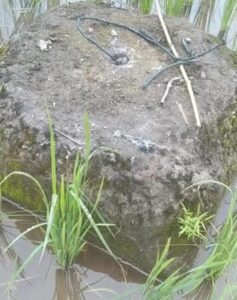
According to Jagpal Singh Dhanoa, the SP in Jowai, the clashes started between 10 am and 11 am. The Lapangap villagers, escorted by police personnel, were harvesting the crop when a catapult attack started.
Catapults are common in the villages here, and men carry them when going to the forest or guarding the fields at night. “We usually use iron pellets,” said Lyngdoh.
The catapult attack led to clashes, and the Meghalaya police “resorted to mild tear gas” to disperse the crowd, the SP said. The hand-to-hand scuffle continued for hours, and finally, around 1.30 pm, the fight stopped. Both sides decided that it was time for the administrative authorities to meet the next day.
“The Lapangap villagers were returning to the village when there was a fresh attack. This time, it happened about 1 km away from the first clash site, near the entrance of the village. Unfortunately, the Karbi villager died in the second bout of clashes,” Dhanoa narrated the incident.
Recently, Opposition leader Mukul Sangma alleged that there was an intelligence slip on the part of the state police.
The Meghalaya police have been camping at Lapangap since June and patrolling the entire area 24×7.
The other side of the story

Saranga Pani Sarma, the deputy commissioner of West Karbi Anglong, said the situation at Tahpat is still tense, and night curfew has been imposed.
On what other measures are being taken, Sarma said, “It is an open border, and this is a long-standing issue. We are taking all measures…”
Barnabas Kiling, the central committee general secretary of the Karbi Students’ Association (KSA), said the land over which the clashes occurred belongs to the Karbis.
“Some have land pattas from 1950s (during land transfers under the Bordoloi Committee recommendations) and some pattas are from the 1970s. There is a border pillar here since 1951. I was told that people from the Meghalaya side tried to break the pillar several times,” he told Sunday Monitor.
Kiling visited the family of the deceased Karbi villager Oriwell Timung on October 11. The man left behind his wife and five children.
KSA, along with members of the Hamren Regional Committee and the Socheng-Amreng Border Development Committee, visited the interstate border in July this year after the 1951 pillar was destroyed allegedly by miscreants from Lapangap village in Meghalaya.
“It is not the fault of these poor people on both sides, but the fault of the governments. There would not have been any conflict had the border issue been resolved,” said Kiling.
While villagers on both sides continue to suffer, the two states drag their feet on the issue. After an impressive start in 2022 with the signing of the MoU, the process of resolving the border dispute has again become stagnant, more so because of the Assembly elections in Assam next year. Instead of dithering on it and making the burning borders election rhetoric, the governments must show sincerity in fast-tracking the process and consider long-term socioeconomic developments in the areas.

